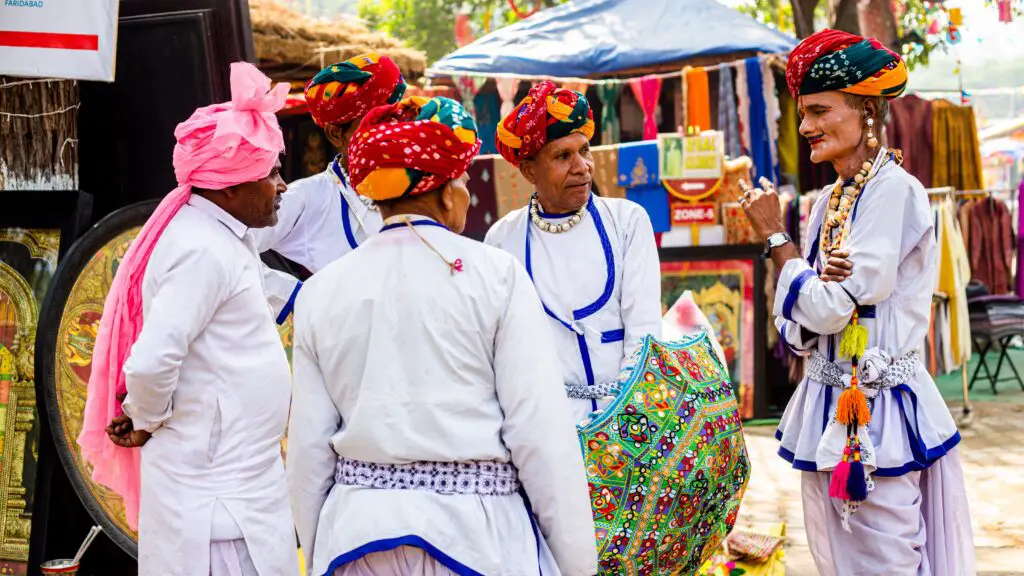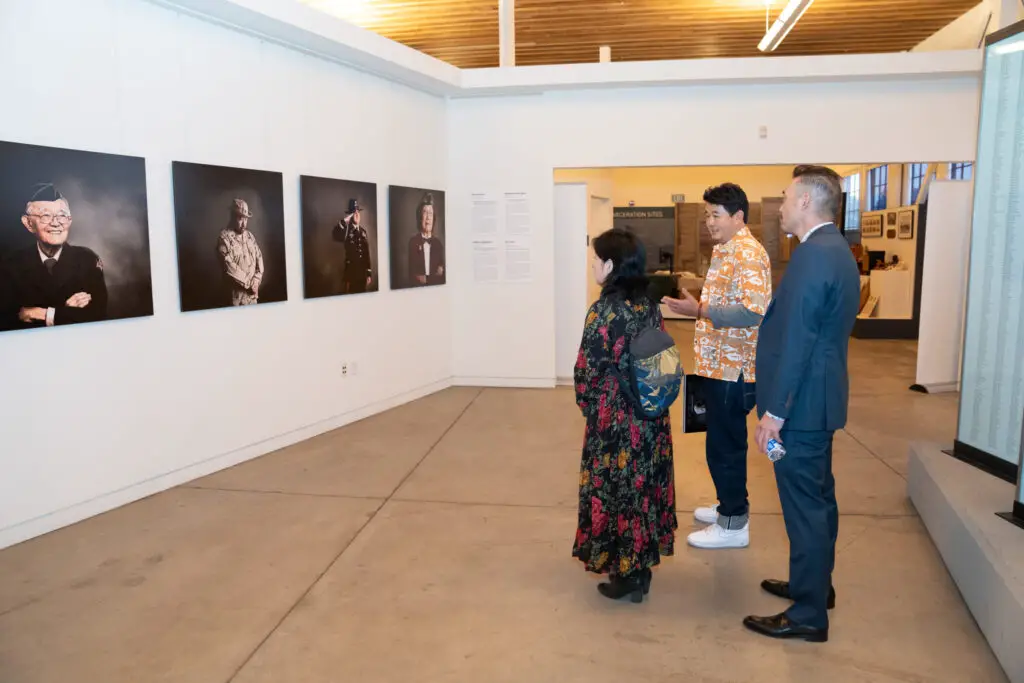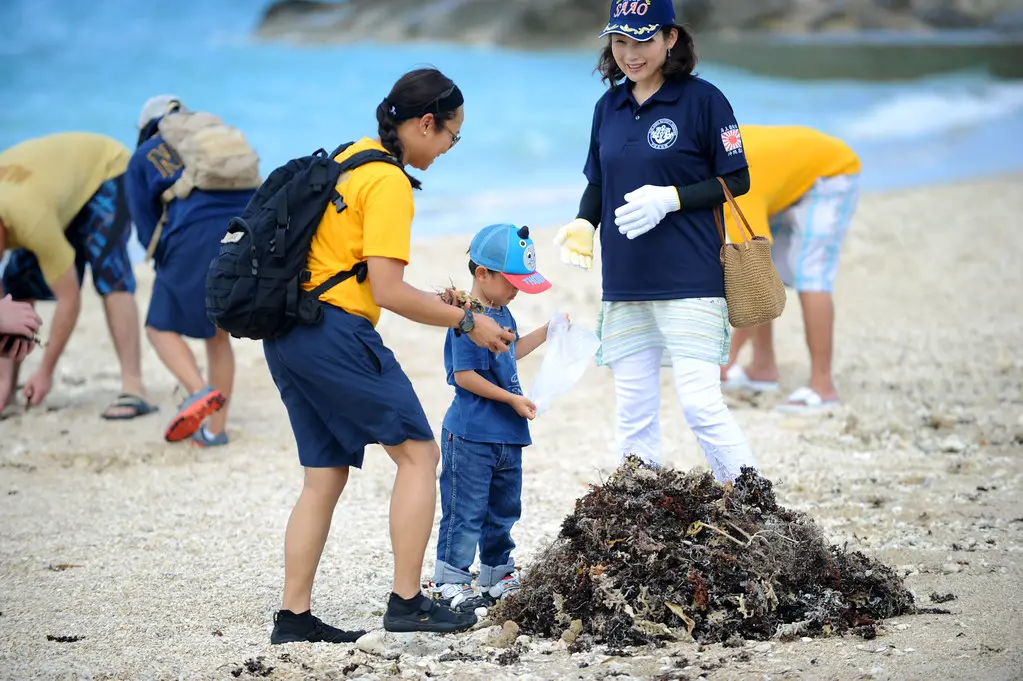Embarking on a journey goes beyond mere exploration of geographical landscapes; it serves as a profound catalyst for cultural exchange.
Traveling, with its transformative power, has the unique ability to bridge gaps between diverse societies, fostering a rich tapestry of shared experiences, traditions, and perspectives.
The phrase “How Travelling Helps In Cultural Exchange” encapsulates the essence of this phenomenon, highlighting the pivotal role that travel plays in breaking down barriers and promoting understanding among people from different backgrounds.
As individuals traverse the globe, they not only witness the unique customs and traditions of foreign cultures but also actively engage in a dynamic exchange that enriches their own worldview.
This interplay of ideas and customs creates a harmonious blend, forging connections that transcend borders and contribute to the global tapestry of human diversity.
1. Broadening Perspectives

Traveling serves as a powerful catalyst for broadening perspectives, opening up new horizons that transcend one’s own cultural boundaries. This expansion occurs through various interconnected facets.
Exposure to Diversity
Encounter with Different Cultures: One of the most transformative aspects of travel lies in the firsthand exposure to a myriad of cultures.
By immersing oneself in the customs, traditions, and lifestyles of different societies, travelers gain a nuanced understanding of the rich tapestry of human civilization.
This direct engagement facilitates a profound appreciation for the cultural diversity that exists across the globe.
Interaction with Diverse Communities: Beyond merely observing, travelers actively engage with communities that reflect a spectrum of perspectives.
Whether through participating in local traditions, sharing meals, or joining in cultural celebrations, these interactions provide a unique opportunity to connect on a human level.
The bonds formed during these encounters foster a sense of global unity, breaking down the perceived barriers that may exist between people of different backgrounds.
Breaking Stereotypes
Challenging Preconceived Notions: Traveling confronts individuals with the reality that often defies stereotypes.
By experiencing the nuances of a culture firsthand, travelers challenge preconceived notions that may be rooted in ignorance or misinformation.
This process of unlearning and relearning contributes to a more accurate and nuanced understanding of diverse societies.
Overcoming Cultural Misunderstandings: Cultural exchange through travel acts as a powerful antidote to misunderstandings.
Interacting with people from different backgrounds allows travelers to navigate through potential cultural pitfalls, fostering a climate of mutual respect and understanding.
Overcoming cultural misunderstandings becomes a vital step in promoting global harmony and dismantling the divisive walls built on ignorance.
2. Language Acquisition
One of the most tangible and dynamic benefits of travel in the realm of cultural exchange lies in the acquisition of languages. This process goes beyond the mere acquisition of words; it involves a profound engagement with the cultural fabric of a society.
Immersive Language Learning
Communication with Locals: Traveling places individuals in real-life language scenarios, providing an immersive environment for language acquisition.
Engaging in conversations with locals becomes a classroom without walls, allowing travelers to pick up not only vocabulary but also the nuances of pronunciation, intonation, and colloquial expressions.
This direct interaction enhances language skills in a way that textbooks cannot replicate.
Practical Language Applications: Beyond formal language settings, travel presents opportunities for practical applications of linguistic knowledge.
From navigating public transportation to ordering meals at local eateries, travelers apply their language skills in everyday situations.
This practical dimension not only reinforces learning but also creates a sense of cultural connection through shared language experiences.
Understanding Cultural Nuances through Language
Idioms and Expressions: Languages often encapsulate the essence of a culture, and understanding idioms and expressions adds depth to cultural appreciation.
Travelers, by delving into the idiomatic nuances of a language, gain insights into the cultural values, beliefs, and historical references unique to that society.
This linguistic exploration becomes a gateway to understanding the subtleties that shape cultural identities.
Cultural Significance of Language: Language serves as a cultural touchstone, reflecting the collective history and ethos of a community.
Traveling allows individuals to grasp the cultural significance embedded in language, whether through traditional storytelling, folklore, or religious texts.
This understanding fosters a deeper appreciation for the interconnectedness of language and culture, reinforcing the notion that language is not just a means of communication but a profound expression of identity.
3. Shared Traditions and Customs

As travelers embark on journeys to distant lands, the realm of shared traditions and customs emerges as a pivotal avenue for cultural exchange. This immersive engagement with the cultural practices of different societies facilitates a profound connection that transcends geographical boundaries.
Participation in Local Festivals
Celebrating Cultural Events: Travel provides the opportunity for individuals to partake in local festivals and celebrations.
Through active participation, travelers not only witness the vibrancy of cultural events but become integral parts of the festivities.
This firsthand involvement fosters a sense of belonging and allows for the exchange of joy and camaraderie, breaking down barriers and forging connections rooted in shared experiences.
Learning Traditional Practices: Beyond the festivities, travelers have the chance to delve into the intricacies of traditional practices.
Whether it’s learning traditional dances, participating in religious ceremonies, or engaging in artisanal crafts, these experiences become a gateway to understanding the historical and cultural underpinnings that shape a community’s identity.
Observing and Adopting Customs
Cultural Etiquette: Traveling necessitates an awareness of cultural etiquette, and through observation and learning, individuals navigate the subtleties of appropriate behavior.
Adhering to local customs not only demonstrates respect but also serves as a bridge for cross-cultural understanding.
The exchange of cultural norms becomes a two-way street, where travelers bring their own cultural perspectives while embracing those of the communities they visit.
Understanding Social Norms: Beyond etiquette, travel allows for a nuanced understanding of social norms. Observing daily life, engaging in communal activities, and sharing meals provide insight into the fabric of social interactions.
This firsthand experience aids in dismantling stereotypes and fosters a deeper appreciation for the diverse ways in which societies structure their social dynamics.
4. Culinary Exploration
The exploration of local cuisine emerges as a delectable avenue for cultural exchange, weaving together the diverse flavors, traditions, and stories that characterize a community’s culinary landscape.
Trying Local Cuisine
Appreciation for Diverse Flavors: Traveling offers a gastronomic journey that goes beyond mere sustenance. By indulging in local cuisine, individuals embark on a sensory adventure, savoring diverse flavors that reflect the region’s unique ingredients and culinary techniques.
The act of trying local dishes fosters an appreciation for the richness and variety of global gastronomy, cultivating a palate that transcends cultural boundaries.
Culinary Traditions as Cultural Artifacts: Local dishes serve as cultural artifacts, each recipe steeped in history, tradition, and regional identity.
Through the act of sampling these dishes, travelers gain insights into the cultural narratives embedded in culinary traditions.
Every bite becomes a portal to the past, offering a taste of the customs, agricultural practices, and historical influences that have shaped the local cuisine.
Cooking Classes and Culinary Workshops
Hands-On Experience in Local Kitchens: To deepen the culinary experience, travelers can participate in cooking classes and culinary workshops.
These hands-on activities provide an immersive understanding of local ingredients, cooking methods, and cultural significance.
Cooking alongside locals not only enhances culinary skills but also facilitates direct interaction, creating a shared space for learning and cultural exchange.
Sharing Recipes and Food Stories: Culinary exploration extends beyond the act of eating; it involves the sharing of recipes and food stories.
Through these exchanges, travelers not only bring home a taste of the places they’ve visited but also create a bridge between cultures.
The sharing of recipes becomes a form of storytelling, connecting people through the universal language of food and fostering a deeper understanding of the cultural contexts in which these dishes originated.
5. Arts and Crafts

In the realm of cultural exchange, the exploration of local arts and crafts emerges as a vibrant tapestry that weaves together creativity, tradition, and shared human expression.
Traveling provides a unique opportunity for individuals to engage with the artistic heritage of diverse communities, fostering connections that transcend cultural boundaries.
Exploration of Local Arts
Visiting Art Galleries and Museums: Cultural exploration often finds its expression in the visual and tactile arts.
By visiting art galleries and museums, travelers immerse themselves in the creative narratives of a region.
From paintings and sculptures to artifacts and installations, these spaces become gateways to understanding the historical, social, and aesthetic dimensions of a culture’s artistic expression.
Supporting Local Artisans: Beyond passive observation, supporting local artisans becomes a tangible way to engage with cultural creativity.
Purchasing handmade crafts and artworks directly from local markets not only provides economic support but also fosters a connection with the artists themselves.
This act of patronage reinforces the idea that art is a universal language that can bridge gaps and create a shared appreciation for craftsmanship.
Hands-On Participation
Workshops and Classes: Travelers can deepen their connection to local arts by participating in workshops and classes.
Whether it’s learning traditional painting techniques, pottery, or other craft forms, these hands-on experiences offer a unique insight into the artistic processes that define a culture.
This direct engagement allows for a more profound understanding of the skills and techniques passed down through generations.
Creating Art as a Cultural Exchange: The act of creating art becomes a powerful form of cultural exchange in itself.
Through collaborative projects or individual artistic endeavors, travelers have the opportunity to express their own perspectives while drawing inspiration from the local environment.
This mutual creation becomes a dialogue, transcending linguistic barriers and fostering a shared appreciation for the diversity of creative expression.
6. Mutual Understanding and Tolerance
At the heart of cultural exchange, the journey of travel plays a transformative role in fostering mutual understanding and tolerance.
As individuals traverse the globe, they become architects of bridges that connect diverse societies, paving the way for a more interconnected and tolerant world.
Building Bridges of Understanding
Shared Experiences: Traveling provides a platform for shared experiences that transcend cultural differences. Whether it’s celebrating festivals, exploring local traditions, or simply connecting with people on a personal level, these shared moments become the building blocks of mutual understanding.
The common ground created through shared experiences fosters a sense of unity and breaks down the barriers that may arise from unfamiliarity.
Embracing Differences: Through exposure to diverse cultures, travelers learn to embrace differences rather than fear them.
The process of navigating through unfamiliar customs and traditions fosters an appreciation for the richness of human diversity.
This newfound understanding becomes a powerful tool in dismantling stereotypes and promoting a culture of tolerance and acceptance.
Fostering Global Citizenship
Encouraging Open-Mindedness: Traveling inherently encourages open-mindedness by exposing individuals to a multitude of perspectives.
Engaging with people from different backgrounds challenges preconceived notions and fosters a willingness to see the world through diverse lenses.
This open-minded approach becomes a cornerstone in building a global community that values the unique contributions of each culture.
Creating Cultural Ambassadors: Travelers, by virtue of their experiences, become cultural ambassadors. The insights gained from their journeys empower them to convey the importance of mutual understanding and tolerance to others.
By sharing their stories and advocating for cross-cultural appreciation, they contribute to a broader narrative that champions unity in diversity and nurtures a sense of global citizenship.
7. Social Media and Technology in Cultural Exchange
In the contemporary landscape of global connectivity, the integration of social media and technology has emerged as a powerful tool for fostering cultural exchange.
These digital platforms not only enable individuals to document and share their travel experiences but also facilitate virtual connections that transcend geographical boundaries.
Documenting and Sharing Experiences
Social Media Platforms: Social media serves as a dynamic canvas for travelers to document and share their cultural experiences in real-time.
Platforms like Instagram, Facebook, and Twitter allow individuals to showcase the richness of diverse cultures through photographs, videos, and personal anecdotes.
This instantaneous sharing creates a virtual window into different parts of the world, fostering a sense of global interconnectedness.
Travel Blogs and Vlogs: Beyond the immediacy of social media, travel blogs and vlogs provide a more in-depth exploration of cultural experiences.
Travelers can share detailed narratives, insights, and reflections on their journeys, offering a more nuanced understanding of the places they visit.
These digital platforms not only serve as personal diaries but also as valuable resources for those seeking to learn about and appreciate different cultures.
Virtual Cultural Exchange Programs
Online Platforms for Cross-Cultural Interaction: Virtual cultural exchange programs leverage technology to facilitate meaningful interactions between individuals from diverse backgrounds.
Through video conferences, webinars, and online forums, participants can engage in discussions, share perspectives, and build connections without the need for physical travel.
These platforms democratize cultural exchange, making it accessible to a broader audience.
Connecting Globally through Technology: The advent of technology has made it possible for individuals to connect globally, transcending geographical distances.
Whether through language exchange apps, virtual reality experiences, or collaborative online projects, technology serves as a bridge for cross-cultural connections.
This interconnectedness contributes to the democratization of cultural exchange, allowing people from different parts of the world to engage in meaningful dialogue and mutual learning.
Related Topics:
Conclusion
The act of traveling stands as a transformative catalyst for cultural exchange, weaving together a rich tapestry of shared experiences, understanding, and appreciation.
From immersive language learning to participation in local traditions, and from savoring diverse cuisines to connecting through arts and crafts, every aspect of travel contributes to the dissolution of cultural barriers.
As individuals traverse the globe, they become not just observers but active participants in the global dialogue of diversity and unity.
Moreover, in the digital age, social media and technology serve as powerful tools, extending the reach of cultural exchange beyond physical boundaries.
The mutual understanding, tolerance, and interconnectedness fostered through travel contribute to a more harmonious and globalized world—one where the celebration of diversity becomes a unifying force, and cultural exchange becomes a shared journey towards a more interconnected and enlightened human experience.
FAQs
How does traveling contribute to cultural exchange?
Traveling exposes individuals to diverse cultures, fostering a firsthand understanding of traditions, customs, and lifestyles. The immersive nature of travel encourages engagement, creating opportunities for meaningful cultural exchange.
In what ways does language acquisition during travel promote cultural exchange?
Learning the local language enhances communication and understanding. It goes beyond linguistic skills, providing insights into cultural nuances, idioms, and expressions, fostering a deeper connection with the local community.
How does participating in local festivals and events facilitate cultural exchange?
Participation in local festivals allows travelers to engage in shared experiences, celebrating cultural diversity. It provides a platform for mutual enjoyment and understanding, fostering connections that go beyond cultural differences.

1 thought on “How Travelling Helps In Cultural Exchange”